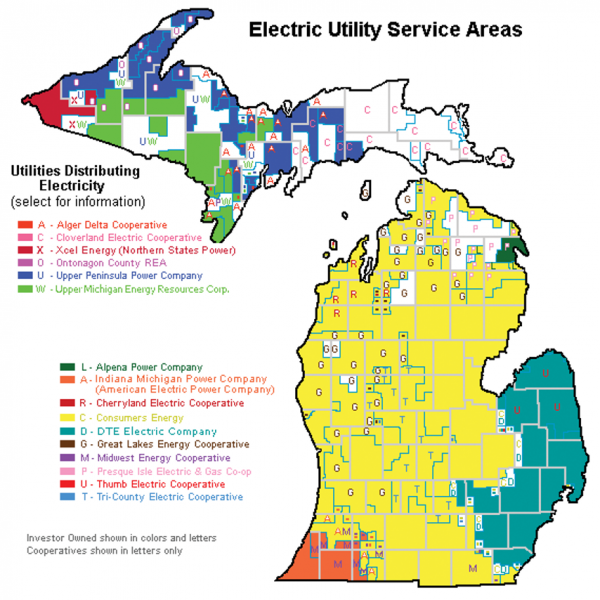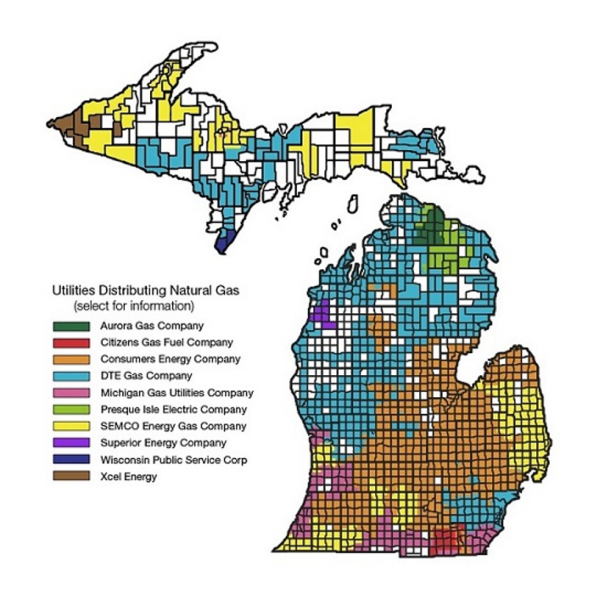Utilities 101
The utility sector can be overwhelming and confusing. To help ratepayers navigate issues around electric and gas utilities, we are crafting a guide to some of the most frequently asked questions. Find our Utilities 101 guide below, and check back for updates soon.
How can I get involved in Michigan Public Service Commission (MPSC) cases that affect me?
Members of the public can file comments on any case that is before the commission. For example, if a utility is proposing to place a new charge on its customers, that request will become a case before the commission as they decide whether or not to approve it. You can submit a comment that will become part of the public case record and be read by the commissioners.
Directions on how to submit a comment by mail or email are here. The trickiest part is that your submission must include the number for the case in question. Finding the case number can be a bit of a chore. One way is to go to the MPSC’s online library of cases and sort by date filed to find the case you are looking for. This is also where you will find filings in the case as they come in, such as testimony from the utility, testimony from intervening groups, public comments like yours and orders from the MPSC.
Another way is to look up active rate cases listed on CUB’s site, which includes the case number for all cases. We can’t keep up with every single case that comes before the MPSC, but we try to keep the site up to date with the most important ones, especially any that involve a rate increase.
What is the difference between a regulated investor-owned utility and a non-regulated energy company?
Most Michigan residents are customers of a regulated investor-owned utility (IOU). The two biggest examples in the state are DTE Energy and Consumers Energy. These are utilities owned by for-profit, publicly-traded companies that by law can be the only entities selling electricity in their respective service territories. In Michigan, they also own the distribution system (poles and wires) in their service territories. DTE Energy’s service territory covers most of southeast Michigan and the Thumb region, while Consumers Energy’s covers the majority of the rest of the Lower Peninsula. See these maps of utility service territories below:


So the identity of the utility you pay your bills to is a function of where you live, not the company of which you chose to be a customer (an exception to this is the small electric choice market in Michigan, which we will cover separately).
This is where the “regulated” nature of the utilities becomes important. An unregulated monopoly could impose price-gouging or other business strategies that are profitable to the company but harmful to customer welfare – after all, they have a captive customer base. So the point of state utility regulation is to set utility rates at reasonable levels while still ensuring that the utility receives a rate of return on its investments that allows it to be a profitable enterprise.
The fact that utilities are regulated also means that they have an obligation under law to serve customers in its service territory. Your utility cannot refuse your business like regular private companies can.
What is the MPSC?
The MPSC is the public body that regulates electricity, natural gas and telecommunications services in Michigan. It consists of three commissioners appointed by the governor, and also support staff. The commissioners vote on cases that determine the rates and conditions of service used by private investor-owned utilities. The MPSC does not regulate transmission, which is instead regulated by the Federal Energy Regulatory Commission (FERC).
Since the MPSC is a public organization, Michigan ratepayers have the right to send comments and complaints to the MPSC and to participate in public forums the MPSC holds to give the public a chance to interact with the Commission and express their concerns.
What is “electric choice” in Michigan?
Earlier, we said that in Michigan, where you live determines to whom you pay your electric bill because the state is divided into service territories, each controlled by a regulated monopoly utility. This is true in practice for residential customers but it is worth mentioning that Michigan technically does allow some degree of choice of electric supplier. Utility customers are able to switch to a licensed alternative electric supplier, but the number of customers who are able to do this is capped based on how much electricity the customers use. Alternative electric suppliers cannot provide electricity beyond an amount equivalent to 10% of each utility’s retail sales.
There are no licensed alternative suppliers trying to enroll residential customers in Michigan, according to the MPSC. The electric choice option has been used primarily by large commercial and industrial customers. Both Consumers Energy and DTE have hit their caps, and thousands of customers who have expressed interest in switching to an alternative supplier are waiting in a queue.
What is MISO?
Here is the short answer.
Michigan is part of the territory of the Midcontinent Independent System Operator, or MISO. MISO runs what is essentially a massive marketplace for wholesale generators of electricity. Power plants, from nuclear reactors to wind farms, sell into MISO’s market for energy, and on an hourly basis (in some cases less) the operator matches the supply of power with demand to set prices. This sends price signals to power plants to know when they need to come online, ramp up or ramp down to meet the demand for electricity on different parts of the grid.
If you’re curious to know more, here is the longer answer.
For most of the 20th century, the country was dominated by utilities that owned all the generation, transmission and distribution in their service territories, and Michigan was no exception.
But in the 1990s and early 2000s, a movement to deregulate electricity around the country gained traction, including in Michigan.
The FERC ordered changes to make the grid more like an “open access” system, where utilities had to allow others to transmit power on the utilities’ portions of the grid. These moves eventually led to the creation of regional transmission organizations (RTOs) and independent system operators (ISOs): non-profit entities, sometimes described as the “air traffic controllers” of the electric grid, that set the rules governing trade of electricity between utility-owned and independent power generators.

While vertically-integrated utilities are still a powerful force in the energy landscape today, particularly in the Southeastern U.S., the majority of Americans (including the vast majority of Michiganders) live in an ISO or RTO territory
Also as part of the deregulatory push, state laws were passed requiring regulated utilities to get out of the transmission line business, which ultimately led to Consumers Energy, DTE and the other utilities becoming generation and distribution only.
Why does it matter what ISO I am a part of?
MISO matters to you, the consumer, because its huge marketplace, covering the middle of North America, is connected and competitive. The power your home receives does not necessarily come from the utility whose name appears on your electric bill. Your utility does not need to supply you with electricity generated only by its own power plants—it can also purchase energy from the larger MISO marketplace. That wider world of energy sources should (in theory) reduce prices compared to the old system.
Remember that MISO’s prices are only wholesale prices. Distribution utilities pay these prices, and then sell that electricity to customers at the retail price.
Subscribe To Stay Up To Date
Get the latest news on utilities in Michigan.
